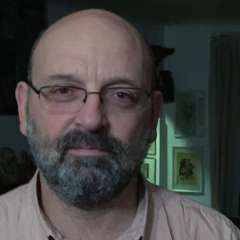On the last day of the George Enescu Festival in Bucharest, two remarkable musicians offered an enthusiastic public an afternoon of late 19th-century music either composed by Johannes Brahms or marked by his shadow.
The performance started with a fiery rendition of the Scherzo that the 20-year-old Brahms composed as part of sonata commissioned by Robert Schumann and meant to be a gift for the great violinist Joseph Joachim. Also known as the F-A-E Sonata, from the initials of Joachim’s adopted motto “Frei Aber Einsam” (Free but lonely), the collaboration between Schumann, his pupil Albert Dietrich and Brahms didn’t withstand the test of time too well, but the latter’s contribution is a standard piece of the repertoire. Vengerov and Papian’s approach to the music was a purely virtuosic one, to the delight of the public filling the Athenaeum.
Things changed though with the next piece, Enescu’s Second Sonata, another work written by a very young composer trying to find his personal voice. Diametrically opposed to the much more popular Third Sonata, with its “popular Romanian character”, the Sonata in F minor is almost totally devoid of transformed folk tunes. The sound is Brahmsian but also French, inspired by the suppleness permeating the work of Gabriel Fauré, Enescu’s teacher at the time at the Paris Conservatoire. Instead of focusing on showing off their technical skills, as they did in Brahms’ Scherzo, the two soloists emphasized instead the work’s extraordinary unity, the way in which the sinuous and rhythmically fluid theme that opens the first movement is transformed throughout the entire work in ways that enhance harmonical ambiguities or alter intervals between notes.
Returning to Brahms, Vengerov and Papian approached the Third Sonata, a late opus, in four rather than three movements, with an unexpected Romantic warmth and lush lyricism palpable especially in the D major Adagio. Vengerov extracted a wide range of timbres from his Stradivarius and Papian’s support was unwavering throughout. The overall restraint made the occasional outburst seem even more pregnant.
There is little doubt that, placed at the beginning or near the end of any recital, César Franck’s Violin Sonata in A major will be its centerpiece. With its cyclical nature – another important source of inspiration for Enescu’s Second Sonata – Franck’s opus is undoubtedly a pinnacle of the violin and piano repertoire. This rendition was superb, full of freshness and enthusiasm, with fluid transitions between movements, beautifully bringing out the improvisatory nature of the music in the Recitativo-Fantasia. Vengerov played with warm lyricism, his rapid switches from explosive fortissimos to tender whisperings truly amazing. Papian handled with ease the difficult piano part, with its runs and leaps characterizing the turbulent Allegro.
Throughout this entire afternoon, one clearly sensed that there was a deep bond between the two musicians that didn't just come via hours and hours of rehearsing and performing together. There was something else too... For many years now, Vengerov has repeatedly declared that conducting has given him a different perspective on interpreting not only the standard concert repertoire but chamber music as well. Before being his collaborator, Vag Papian was Vengerov's conducting teacher and having two instrumentalists with significant conducting experience bring to the surface the wealth of inner voices present throughout the music they interpreted made this recital truly special.
I haven't attended any live Vengerov performance since he came back, five years ago, from a very serious injury that might have easily wrecked his career as a virtuoso fiddler. More mature and less prone to gratuitous pyrotechnics, with his unsurpassed purity of line and elegance intact, Vengerov is, more than ever, one of the few truly great violinists gracing our time.


